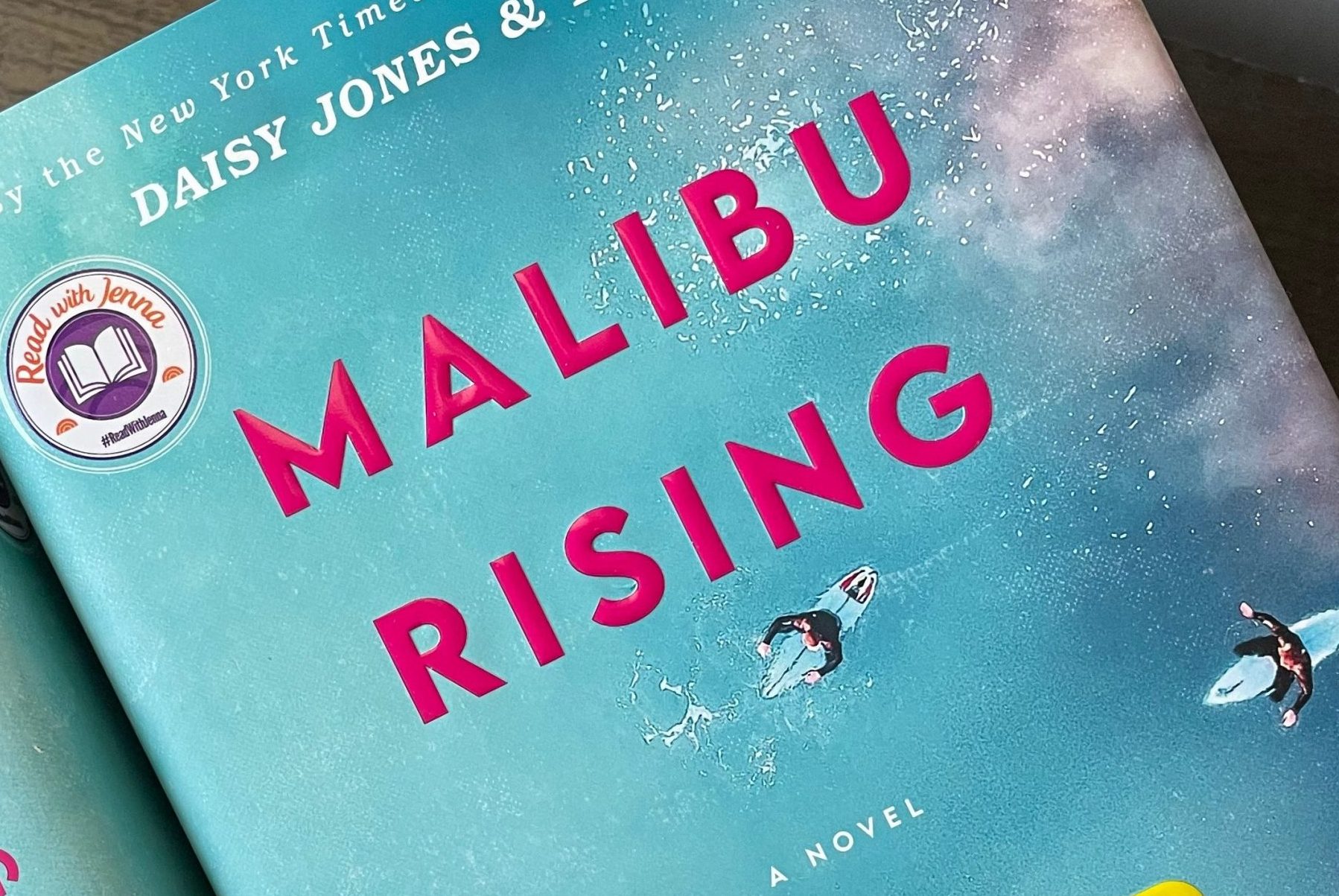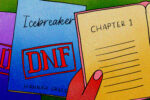Taylor Jenkins Reid’s latest novel “Malibu Rising” is more than a gorgeous snapshot of salty air and cresting waves on the star-studded California coast. Like all Reid’s novels, it pulls readers into a much darker undercurrent. As the novel emphatically warns on its first page, “It is in Malibu’s nature to burn.”
This bodes well for the subjects of the novel: the famous fictional Riva family. Although the Riva family history contains a grand legacy, as one can well imagine, the narrative is different behind closed doors. Right from the beginning — and subconsciously underscored by dueling elemental contradictions including fire versus water and flame versus wave — it becomes clear that for the Rivas, life is a constant ebb and flow. A perilous tide of desiring tranquility but instead finding devastation.
What — or who — is the culprit of the kindling? In the world of the novel, it is Mick Riva who dooms his four children and abandoned wife to a life of tragedy, destined to set the tinderbox Malibu dry lands alight.
Fans of Taylor Jenkins Reid (stylized as TJR) will recognize Mick Riva from Reid’s older novel “The Seven Husbands of Evelyn Hugo.” “Malibu Rising” creates an extended universe of TJR’s lore. The numerous callbacks to moments from “Evelyn Hugo” and references to Reid’s other characters are fun Easter eggs for fans of her work to enjoy. Yet thankfully, the references are not overdone, and the Rivas’ story proves worthy of being written.
The novel features all the components that have made TJR a modern master of novelized period pieces. Like her other novels, “Malibu Rising” features characters that represent satirical versions of celebrities who are egotistical enough to foster their own downfalls. A life in the spotlight is tough to adjust to for her rags-to-riches protagonists. Foreshadowing damnation on her characters is commonplace in TJR’s captivating storytelling method.
In this expertly crafted raveling and unraveling of the Riva family, Mick Riva is the clear villain. A fictional popstar with massive popularity and talent, Mick is also a colossal screw-up.
The novel follows two main timelines: The chapters that take place in the ’50s and ’60s detail the tragic romance between Mick and the naive June Costas. Mick meets June before getting famous; he foolishly promises her a glamourous life as a rock star’s doting wife. The young couple marries predictably fast. Due to Mick’s wandering hand and insatiable desire to sleep around when his career takes off, their purposely clichéd romance painfully crumbles.
June takes Mick’s unfaithfulness unfathomably rough. But not because she is angry or blindsided, but because she still can’t help but love Mick despite it all, spending the entire novel hoping he will return to be her ideal husband.
June’s story is arguably the most heartbreaking of all the novel’s many characters. However, her perspective is invaluable. Due to the restrictive culture of the ’60s and the condemnation of body autonomy and sexual liberation for females, June is a victim of her time period’s harmful, prevailing ideology. She derives her value from her identity as Mick Riva’s wife. Readers painfully watch June fall victim to Mick’s charm again and again, even when it hurts her own children.
https://www.instagram.com/p/CSfMem0hIlv/
The novel’s other timeline is the story of Mick and June’s four children: Nina, Jay, Hud and Kit.
The novel delves into the childhood trauma the four endure after their father abandons them; their mother turns to alcoholism, takes her own life and they are eventually left to fend for themselves.
Their eldest daughter, Nina, keeps the family afloat. In one of the novel’s tear-jerking chapters, Nina drops out of school to become her siblings’ full-time caregiver, transforming into an uptight stand-in mother at only age 17.
Eventually, Nina turns to modeling to support her family. One too many swimsuit campaigns make her a reluctant yet infamous sex symbol. Although she earns her fame without her father’s status interfering, the public eye can only digest Nina in terms of the men in her life: “a dumped wife of a famous man on the cover, the daughter of a famous man on the inside.” Her lack of recognition despite her numerous accomplishments underscores that perhaps the misogyny of her mother’s age is still prevalent. Their two unique decades are more similar than often acknowledged.
This “present“ decade in the novel’s alternating timeline is the 1980s. Like Nina, the other Rivas are full-grown adults, rich in accomplishment. The brothers — Jay and Hud — are a pro surfer and renowned photographer, respectively.
However, the youngest of the family, Kit, is undergoing a tougher journey of self-discovery at 20 years old. She knows she could rival her brother Jay’s surfing career but feels incapable “because she isn’t a guy or a babe.” As the most relatable and down-to-earth character in the novel, Kit continually perceives flaws and awkwardness in herself, worrying over never having a first kiss.
https://www.instagram.com/p/CTQE8sqBKma/
Kit’s crisis of identity puts her character development on par with that of her elder sister, Nina. Undoubtedly, the female characters of the novel earn more pages in their POVs than their male counterparts do. Her decision to spend more time with the female Rivas perhaps reflects TJR’s own ability to sympathize with them. Or perhaps TJR means to boost female prowess through her characters. It is ultimately up to the Riva women to right the wrongs of their father, keep their family together and show miraculously unwavering courage.
Although The New York Times review of “Malibu Rising” labels TJR’s diction as trite, her simple control of language throughout the novel is actually quite remarkable.
The Times’ review condemns the novel’s reliance on superlatives to describe its characters, labeling it as a lazy form of “social satire” and derision of “Hollywood fame.” But TJR’s storytelling ability is nothing short of oceanic, as these simple turns of phrases pull readers further and further into her world. Reid opts for a style that is more “tell-based” and gossipy than “show-based” and metaphorical. But her directness proves that flowery language is not always necessary to demonstrate masterful writing. Instead, she allows readers to focus on the subject matter of the story and not get caught up in her word choice.
TJR manages to maintain the flow of the novel throughout. It reads like one long exploitative tabloid — a stylistic choice that serves as a far more nuanced commentary on stardom than overused superlatives, as The New York Times contests.
TJR’s linguistic ability to parallel setting and theme is another strength, as her glittering descriptions of the water lend to deeper thematic parallels within the text. One such passage remarks on the rarity of beautiful waves and the unpredictability of surfing them, expressing how, “It requires destiny to be on your side, the ocean must favor you.”
This theme of fate versus free will haunts the Riva children throughout the novel. For instance, physical representations of this theme, such as the family restaurant June despairingly leaves to her children, lead to a moral dilemma for Nina and the Riva children.
Such metaphorical representations would have sufficed to hammer in this theme. Yet Reid takes it a step further with Nina’s character time and time again, in a way that sometimes feels reductive and overused by the end of the novel.
The passage overdoes the textbook language in certain contexts. When Nina finds herself cheated on by her own famous husband like June was, the narration solemnly states, “Maybe our parents’ lives are imprinted within us” only to immediately contradict Nina’s thought with, “Or maybe we are free the moment we’re born.”
Throughout the novel’s constant push-and-pull through time, writing the legacy of a family determined to hold onto the little memory worth having, this theme is obvious enough and does not have to be pointed out to readers this heavily.
Yet despite the Times’ critiques of Reid’s writing style and the redundancies sometimes flattening the impact of otherwise powerful plot points, “Malibu Rising” isn’t a story that will soon leave the minds of readers.
Reid has managed to prove through her unique character creation, strong sense of setting and pseudo-celebrity drama that she is a master of her craft. “Malibu Rising” has earned many positive reviews and has an impressively high 4.15 out of 5-star average rating on Goodreads thus far.
This successful and brilliantly captivating novel proves that although it may be in Malibu’s nature to burn, it is in TJR’s nature to rise — just as the Riva family does in the end.

















